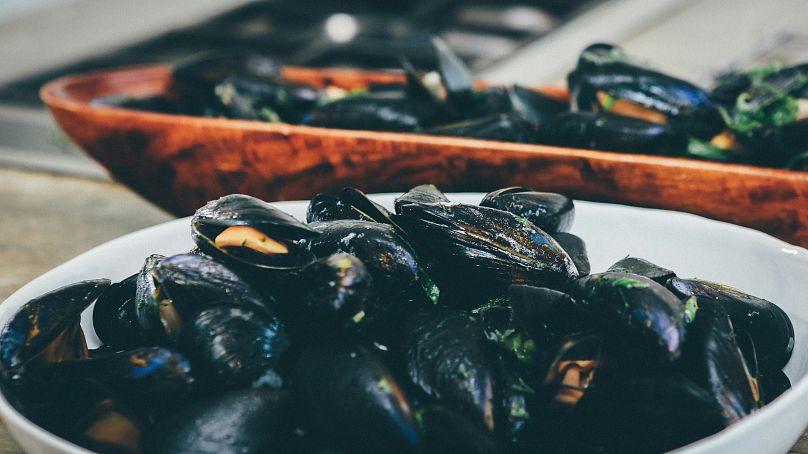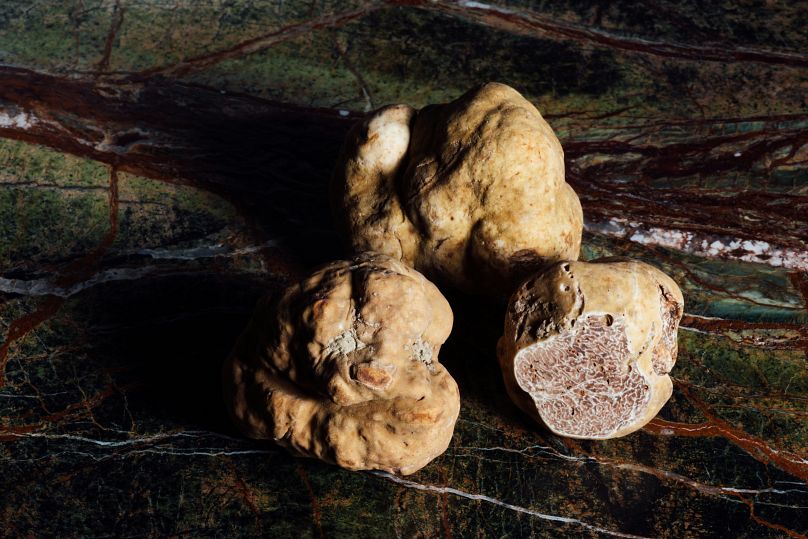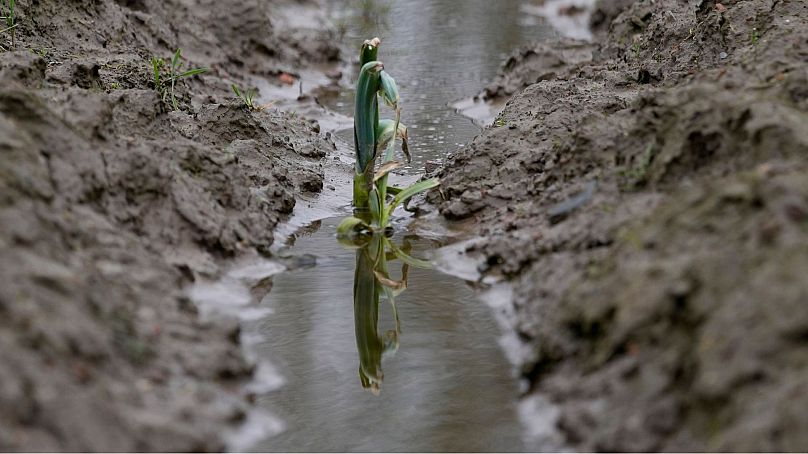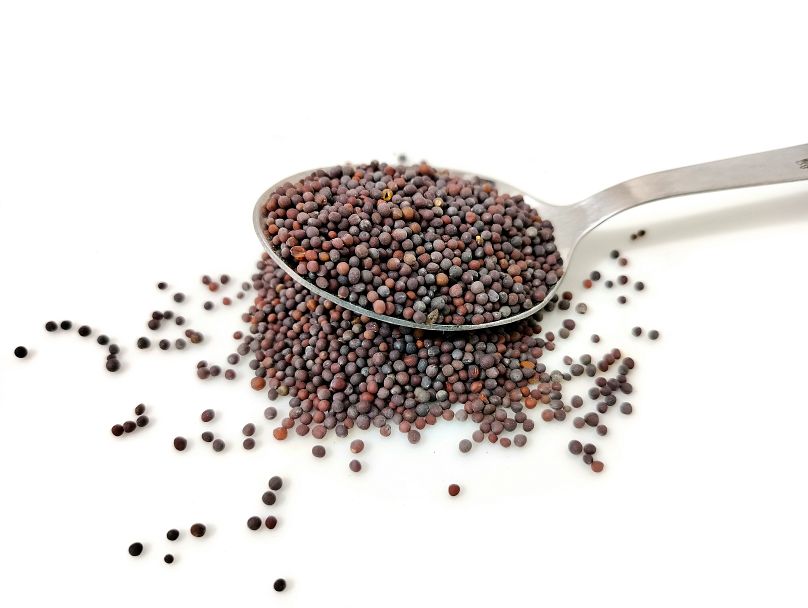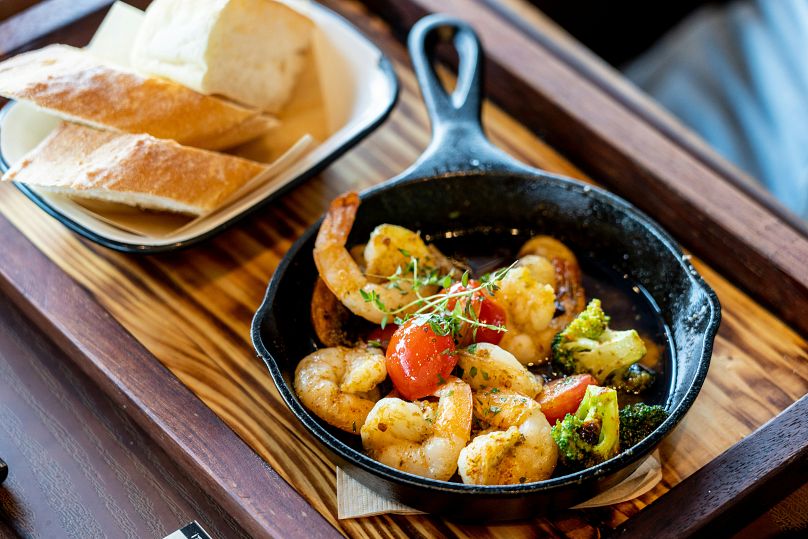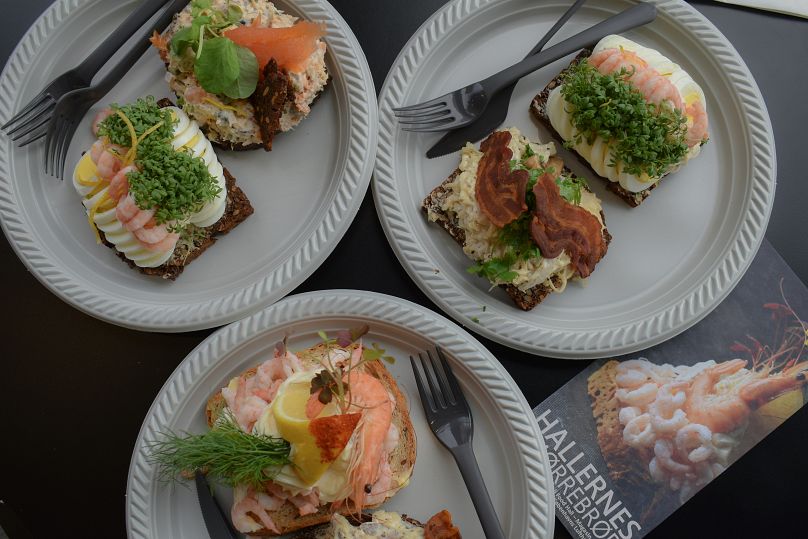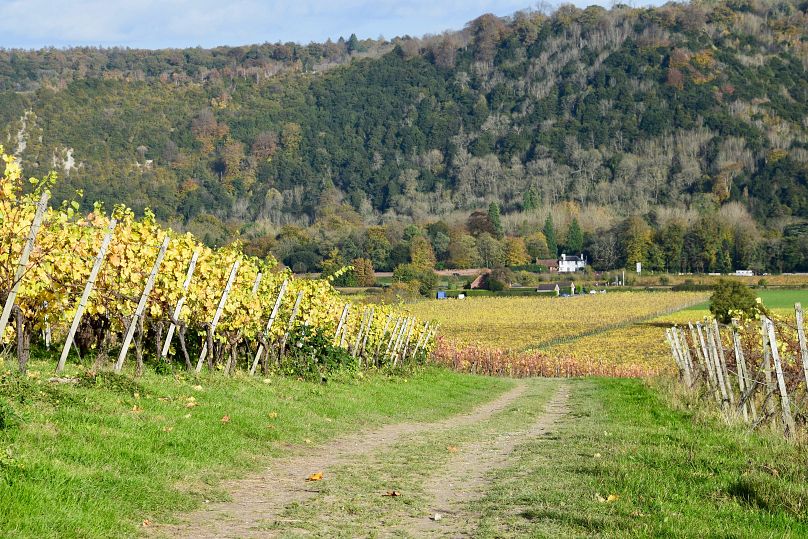Goodbye Gouda and farewell French mustard: Signature foods on the brink of climate extinction
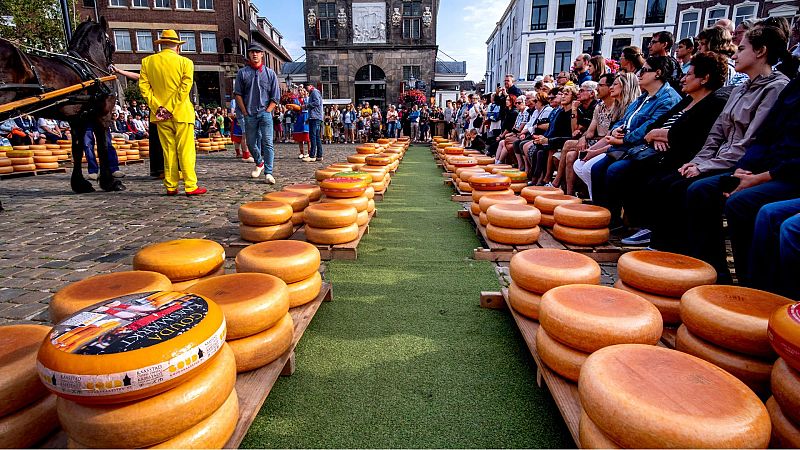
It’s no secret that extreme weather conditions, driven by human-created climate change, are endangering the global food supply system.
Droughts, heatwaves, wildfires and floods combine to wreak havoc on staple crops such as wheat and rice, as well as seafood, coffee and chocolate. But as well as the obvious impacts on the global food chain - famines, food shortages and drastic price increases – we may soon see the end of countries’ traditional gastronomic cultures.
Imagine Belgium without a cone of ‘frites’ topped with mayonnaise, or a French ‘jambon beurre’ baguette without any Dijon mustard. Turkish mezze may have to be served without hummus, Scandinavian ‘smørrebrød’ could lose its staple ‘gravlax’ (smoked salmon), and the Netherlands might soon lose Gouda cheese forever.
Here, Euronews Green breaks down which countries’ signature foods are on the brink of climate extinction.
Will it be goodbye to Gouda for the Netherlands?
The New York Times recently dedicated a report to the potential annihilation of the renowned Dutch cheese Gouda, with experts predicting its demise within 100 years.
The Dutch cheese industry has an annual export value of $1.7 billion (€1.6 billion), but the city of Gouda, which has always been vulnerable to sinking due to its low sea level, is increasingly at risk from floods driven by climate change.
“I wouldn’t expect much cheese from Gouda anymore in 100 years,” Jan Rotmans, a professor at Erasmus University Rotterdam, told the New York Times. “If the land turns into water and the cows disappear, the cheese will have to come from the eastern part of the country, and it won’t be Gouda anymore.”
Mussels might be off the menu for Greece
This year, Greek seafood farmers reported a 90 per cent drop in their catch of mussels for the season after a series of heatwaves in the main mussel-producing area, the Thermaic Gulf.
July’s heatwaves sent sea temperatures above 30°C for days, killing the mussels. The country had previously seen mass mussel deaths in 2021, but scientists then forecast that the scenario wouldn’t repeat until 2031.
For some farmers, 100 per cent of the seed for next year was destroyed, meaning there will be no mussel harvest in 2025 and Greek starter mussels ‘saganaki’ will be off the menu at tavernas. The dish is often made with Greek staple Feta cheese, which some sustainability researchers say will be gone by 2050.
It could be the end for ‘Italy’s gold’, the white truffle
Italy’s white truffles - classified by UNESCO in 2021 as an intangible heritage of humanity – is also under threat from climate change.
The fungus’ natural habitat is being weakened by global warming, drought, deforestation and sudden temperature changes. White truffles prefer cold and humidity, but the beginning of November this year saw temperatures hit an unseasonably warm 20°C.
White truffle harvest season traditionally runs from October to the end of January, but changing weather patterns are making this shorter. They can also be harmed by both drought and abundant rain.
Deforestation is also a risk. Mario Aprile, president of the Piedmont truffle hunters’ association, warns, “The white truffle cannot be cultivated, unlike the black one. Without trees, there are no truffles.”
Say farewell to the world-famous Flemish frites
Last year, hundreds of thousands of tons of potatoes failed to make it to market in Europe, a region that eats the world’s highest quantity of spuds per capita (about 90kg a year). And experts are warning that by 2050, worldwide production of potatoes could be down by nine per cent.
Bloomberg has reported that Belgium - famous for inventing the ‘frite’ (‘French fries’ refers to the style of cut, not the country), which it traditionally serves in paper cones topped with mayonnaise, is being particularly hard hit by the effects of climate change on its potato crops.
Heavy rainfall has seen Belgium’s potato fields flood this year, with harvesting severely delayed and only 50 per cent of crops lifted by their usual time.
France’s shortage of Dijon mustard could continue
France hit the headlines two years ago for a surprising shortage in one of its most famous condiments, Dijon mustard. French supermarkets ran out of the spicy sauce, prices increased by 10 per cent, and retailers limited customers to one jar each.
Unlike Champagne or Roquefort, which are protected by Appellation d'Origine Contrôlée and must be created in the regions for which they’re named, Dijon mustard refers to the centuries-old recipe that marries mustard seeds with white wine.
And though it’s a signature staple of the Burgundy region, the shortage actually originated in Canada, which produces about 80 per cent of the world’s mustard. Years of dry summers have depleted Canadian stores and in 2022, the country’s crops were obliterated by drought. While in France, domestic mustard crops were hit by abnormally wet winters. Experts say these weather patterns will continue to affect the crop - meaning we may see a mustard shortage again soon.
Turkey could lose its mezze staple, hummus
Researchers at the Royal Botanic Gardens at Kew identify drought as the chickpea’s biggest climate challenge, estimating global chickpea crops will see a 50 per cent loss due to climate change.
In Turkey, where chickpeas feature heavily in traditional mezze and many staple dishes, crops were much lower this year than last, due to climate conditions. Scientists say that chickpeas lost their genetic diversity over 10,000 years ago, being bred for crops, meaning they have less resistance to extreme weather events - the pulse is already vulnerable to floods and droughts.
For Spain, it’s olive oil that’s hardest hit
Spain is the world’s leader in olive oil production, but climate change could change that status and affect signature dishes such as Valencia’s ‘allioli’ and Andalusian ‘gambas al ajillo’ (shrimp in garlic and olive oil).
For the past few years, average spring temperatures have surpassed norms by up to 4°C. Combined with persistently low rainfall in 2022 and 2023, severe droughts led to 50 per cent reduction in Spanish olive oil production last year.
Spanish agricultural authorities predicted a below-normal harvest for this year, too, but it remains to be seen what effect the recent devastating floods will have on olive production for the country.
Climate change could cause Norway to lose its traditional gravlax
Sam Kass, former White House chef and political adviser to President Barack Obama, first hosted ‘last supper’ dinners featuring endangered foods at COP21, since hosting them at Davos for the World Economic Forum and across the US. This year, he presented a menu featuring Norwegian salmon.
Seafood is at risk from the climate crisis, with Reuters reporting that Norwegian salmon farmers are grappling with its effects. Harsh winters, El Nino climate patterns and a 20-year high in jellyfish attacks (which can be attributed to changing behaviour patterns due to rising sea temperatures) have driven fish mortality off the Norwegian coast to record highs.
All of which endangers one of the country’s signature ‘smørrebrød’ toppings, ‘gravlax’ (cured salmon). Record-high temperatures and warmer waters are also increasing the threat of sea lice, while vaccines against these stress the fish, leading to fatalities.
Some foods will see a resurgence thanks to changes in climate
In Wales, laver seaweed has been a traditional staple since the 17th century, with Future Generations Commissioner for Wales Derek Walker calling seaweed a Welsh superpower.
The Seaweed Alliance found 50 per cent of the marine area of Wales is suitable for cultivating kelp, driving calls for growing regenerative ocean farming in the country and increasing production of the sustainable crop.
While in the past decade, the US has surpassed Iran to become the world’s top exporter of pistachios – the crop is hardier and more drought-tolerant than the traditional California nut, the almond, making it resilient to extreme weather patterns.
Pistachio trees also rely on wind instead of bees for pollination, so they remain unaffected by diminishing insect populations.
And though the International Organization of Vine and Wine (OIV) has warned that last year’s global wine production was its lowest in more than 30 years, some countries’ climates will change to become perfect for grape crops.
Wine grapes rely on hyperspecific climates to produce wines balanced with sugar, acid, and tannins - and in its climate adaptation documents, the UK government suggests that grape crops would be perfect for the UK’s future environment. The wine industry is booming in Sweden, too.
Today


